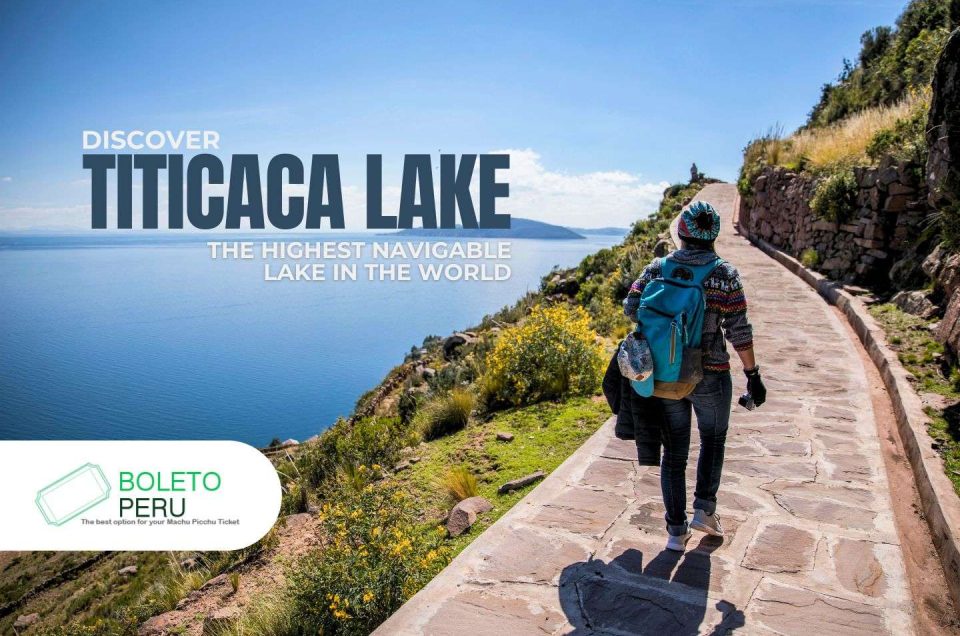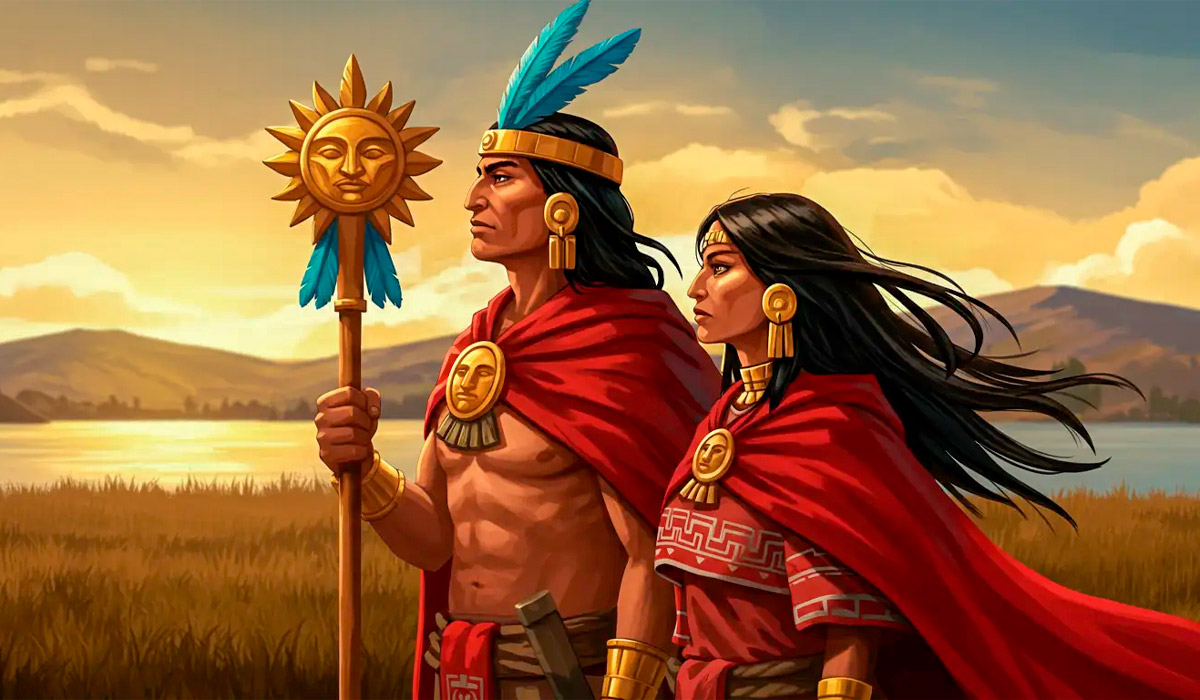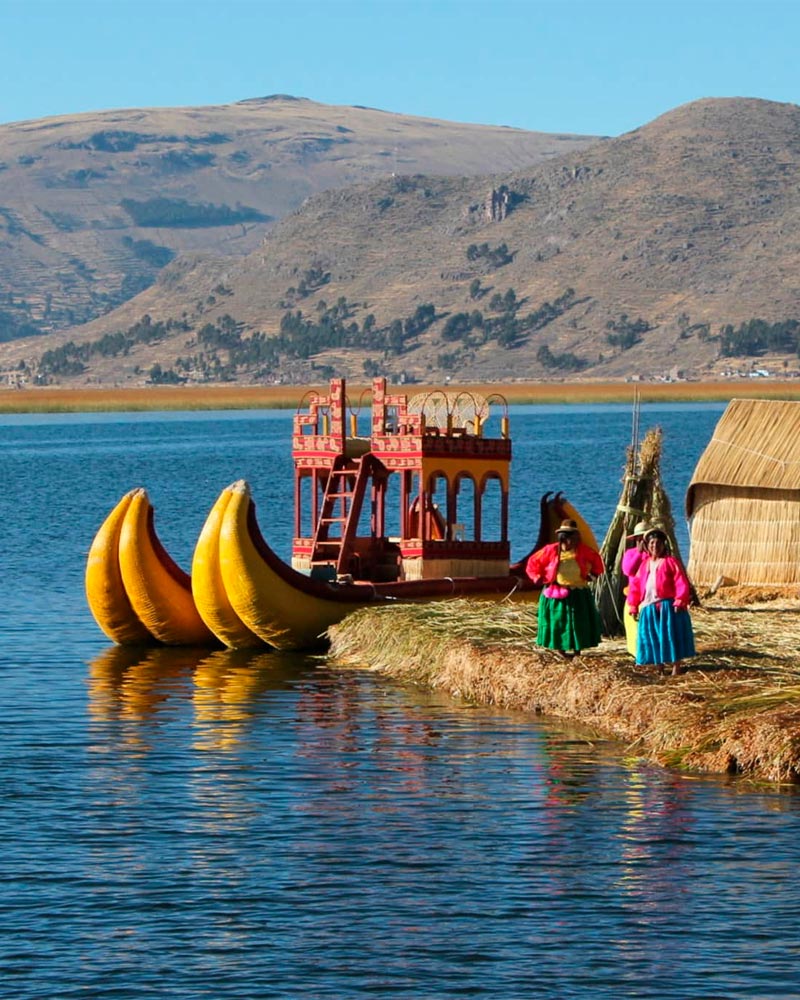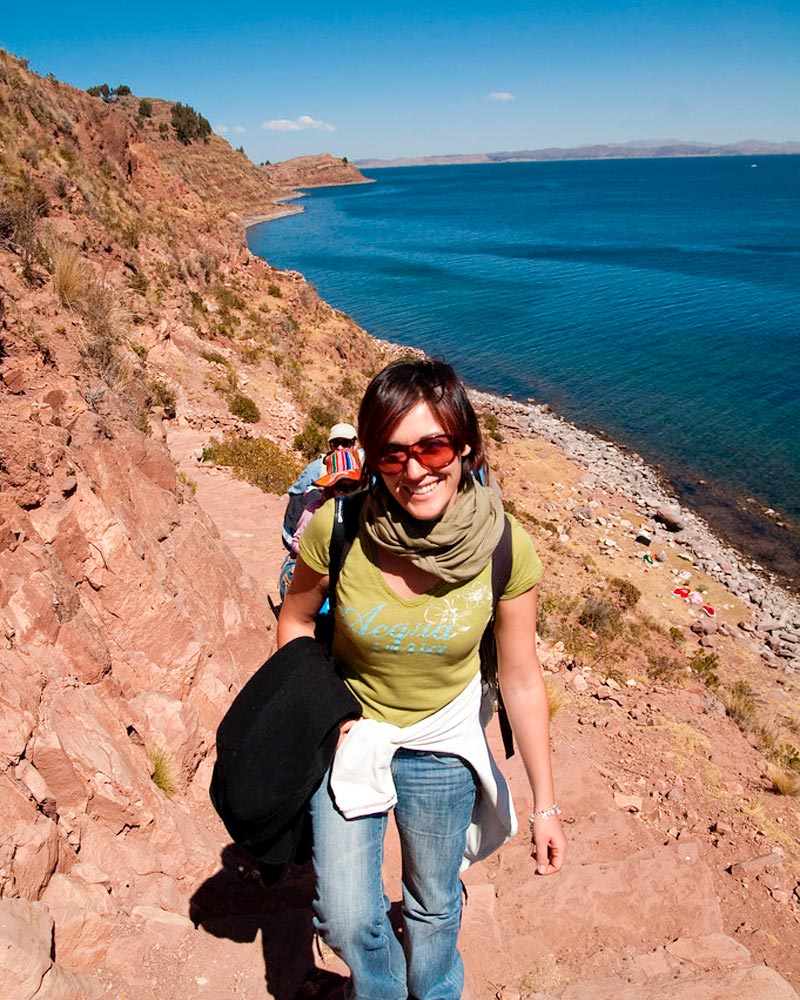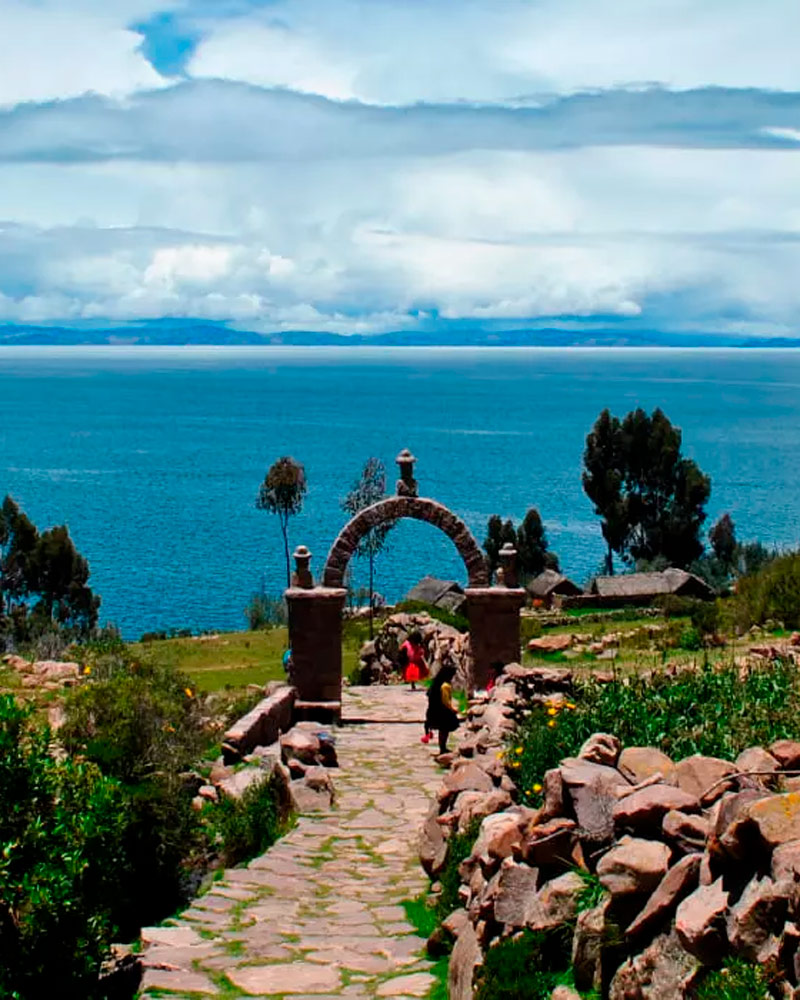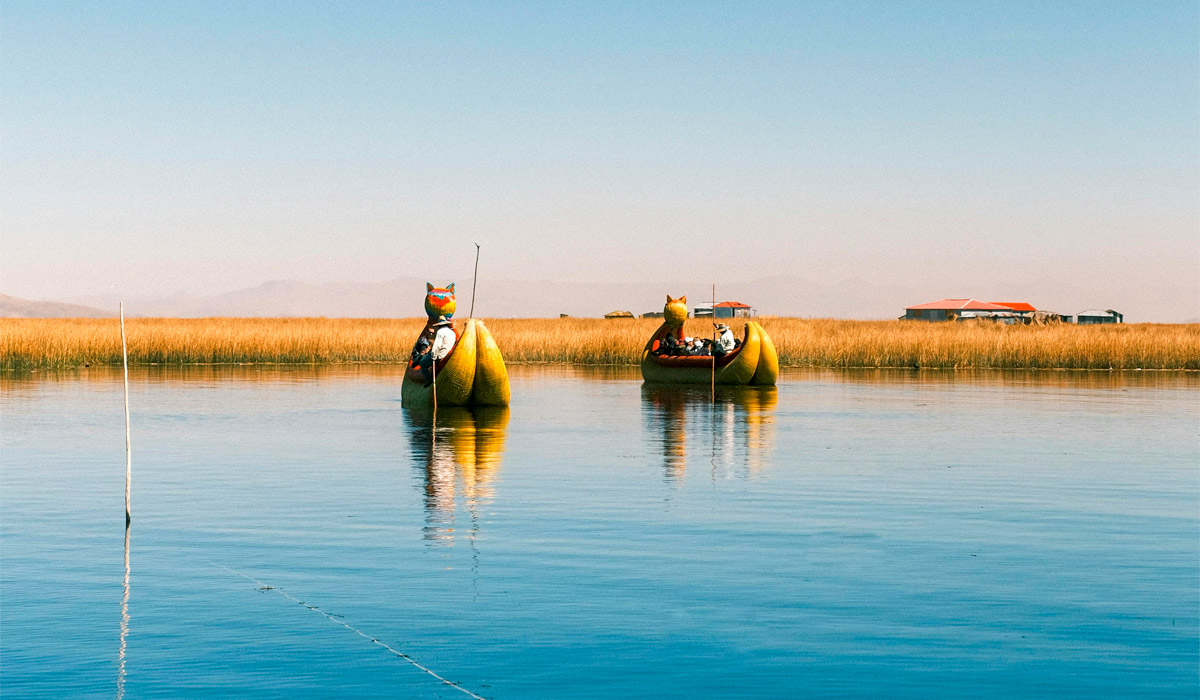Lake Titicaca, located in the heart of the Andes, shared by Peru and Bolivia, is the highest navigable lake on the planet. This amazing body of water is not only striking for its height and size, but also for its deep cultural and spiritual value. Considered sacred by ancient Andean civilizations, Titicaca remains a place full of history, legends, and beauty. If you want to learn more about this famous destination, join us on a tour of its wonders.
History of Lake Titicaca
Lake Titicaca stands out not only for its impressive beauty but also for its deep historical and mythical value. On its shores and in its waters, ancient pre-Inca civilizations developed, leaving a legacy of legends and traditions passed down through generations. These old stories, along with the archaeological remains found in the region, offer a valuable look into the past, showing how the cultures that lived in this sacred land evolved over time.
Andean Legends and Beliefs
Lake Titicaca Peru is deeply connected to the symbolic and spiritual world of the Andes. According to Inca mythology, it was in its waters that Viracocha, the creator god who gave rise to the sky, earth, and stars, emerged. The formation of the sun, moon, and stars is linked to this sacred spot, making the lake a revered place due to its connection with the origin of the cosmos.
Another old story says that Manco Cápac and Mama Ocllo emerged from this same lake, sent by Inti, the Sun god, with the mission to found the Inca civilization. These figures began their journey toward Cusco, where they would establish the heart of the Tahuantinsuyo and pass on key knowledge like farming, pottery, and social rules.
These stories have been kept alive over time by the communities living around the lake, greatly affecting how they understand the world. Today, this legacy lives on in old rituals like the payment to the earth (Pachamama), where the lake is honored with offerings and ceremonies that show a deep spiritual bond with the environment.
Manco Capac and Mama Ocllo
Pre-Inca Civilizations in the Region
Long before the rise of the Inca Empire, the shores of Lake Titicaca were home to important Andean cultures, including the Tiahuanaco and Pucará. These early civilizations left a significant legacy in architecture, technology, and worldview, elements that the Incas later inherited, adapted, and spread throughout their vast territory.
-
The Tiahuanaco Civilization
Considered one of the foundational cultures of the central Andes, Tiahuanaco stood out for its advanced stone constructions and urban planning. Their temples, sculptures, and monolithic structures show a deep knowledge of engineering and social organization. They also developed a highly efficient agricultural system, using techniques like the camellones or waru waru, which allowed them to grow crops in difficult soils, save water, and handle the extreme conditions of the high plateau.
-
The Pucará Culture
This early civilization is known for its unique pottery, with animal-like shapes and stylized human figures, as well as for its carefully built ceremonial centers. The Pucara archaeological site, located in the Puno region, has structures like temples, plazas, and stepped pyramids, which show a complex society with deeply held religious beliefs.
Both Tiahuanaco and Pucará played a key role in the development of cultural and agricultural practices in the Andes. The marks they left can still be seen in their archaeological remains, which help us put together the history of these civilizations that thrived long before Inca rule in the region.
Location of Lake Titicaca
Lake Titicaca is in the Andean region, shared by Peru and Bolivia. Because of its elevation, it is known as the world’s highest navigable lake. It is about 3,812 meters above sea level and covers an area of around 8,372 km². On its surface, there are more than 40 islands, including the well-known Uros Floating Islands, inhabited by communities that have kept ancient traditions alive.
Biodiversity and ecology of Lake Titicaca The Lake
The Lake Titicaca ecosystem is home to many species found only in this highland region. However, the area is in a bad situation due to different environmental problems that put its ecological balance at risk. Protecting the lake and its surroundings is key to making sure these species continue to exist and that the people who depend on it stay well.
Key Species: Among the animals specific to the lake, the killi or carachi fish and the giant Titicaca frog stand out. The frog is an endangered species that can grow up to 20 centimeters long. Also, many birds, both local and migratory, find shelter in this ecosystem. Different water plants and wetland plants also grow on its shores, adding to the rich animal and plant life of this Andean place.
Tourism in Lake Titicaca
Lake Titicaca is one of the most valued places to visit in the Andean highlands, famous for its floating islands, beautiful landscapes, and living traditions that show the cultural history of the people who live there. Every year, thousands of travelers come from Puno to discover the special features of this high-Andean lake and enjoy its unique attractions.
Main Tourist Attractions
Known for its historical and cultural value, Lake Titicaca draws travelers from different parts of the world who are looking for real experiences in a special setting. Its main attractions include:
- Floating Islands of the Uros: These islands, made of totora reeds, are home to the Uros community, who have kept an ancient way of life in the middle of the lake. Visitors can walk on these floating platforms, learn about their traditional building methods, and get to know more about the customs of these native people.
- Sun Island: Located on the Bolivian side of the lake, Sun Island has deep historical and spiritual meaning. On its land are old archaeological remains like the Temple of the Sun (Pilko Kaina) and the Sacred Rock. It also offers paths to explore pre-Hispanic farm terraces and amazing views of the lake and the surrounding mountains.
- Activities and Experiences: Lake Titicaca offers many chances for those who want to learn about the local culture and the Andean landscape. Boat rides let you travel its waters and visit different islands, while cultural experiences include taking part in traditional rituals, staying with local communities, and trying typical dishes from the region. These activities make the trip richer, offering a deeper look into life in the highlands.
|
|
|
|
Full Lake Titicaca Tour
If you are thinking about exploring Lake Titicaca as part of an organized experience, you might consider one of the trips offered by a tourism agency. One of the most complete programs stands out, connecting Machu Picchu with Lake Titicaca over 13 days.
This tour package includes key stops at some of southern Peru’s most famous destinations: Cusco, the Sacred Valley, the Inca Trail, Machu Picchu, and finally, Lake Titicaca. Each part of the trip lets you discover ancient ruins, amazing landscapes, and living traditions that are still kept in local communities.
The journey to Lake Titicaca from Cusco is a trip full of history, where old cultures, stone buildings, and cultural expressions that have lasted through time come together. It’s an experience made for travelers who want to deeply explore the heritage of the Andean world and its different places and people.

